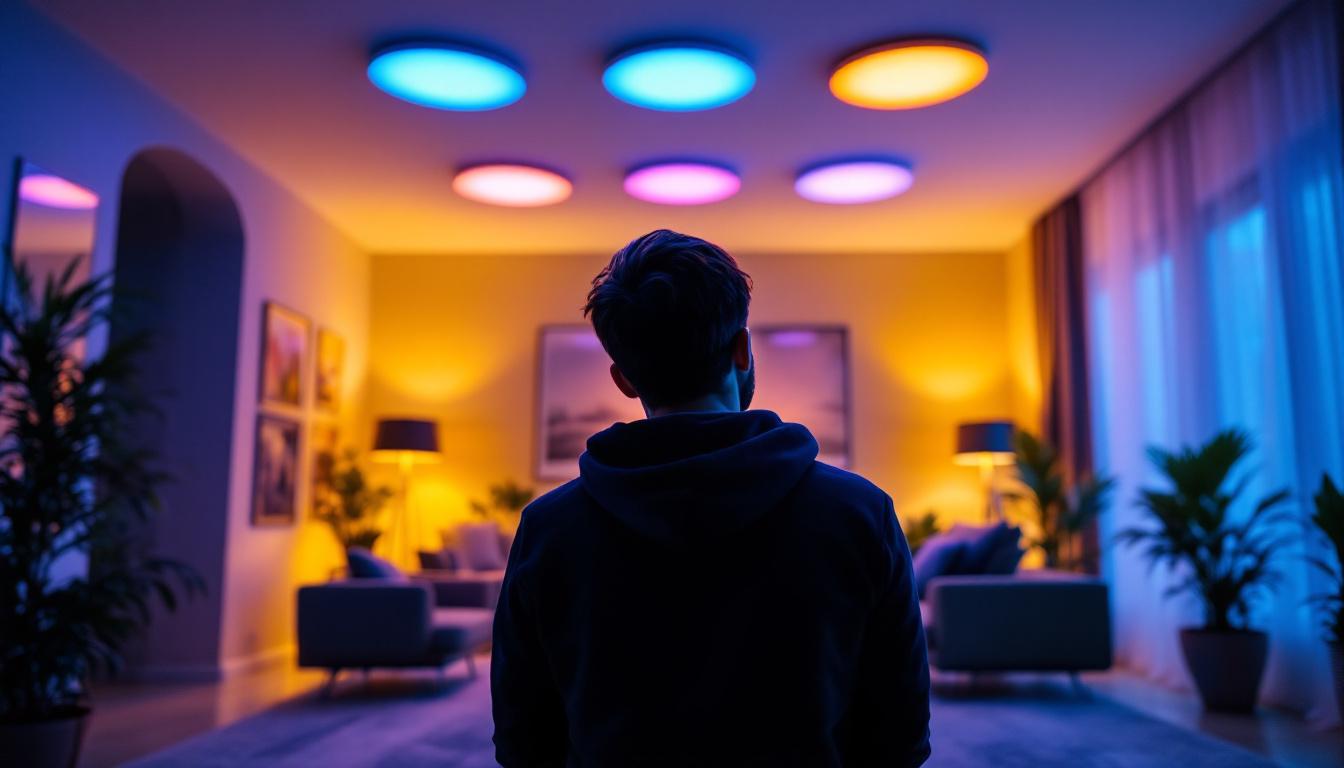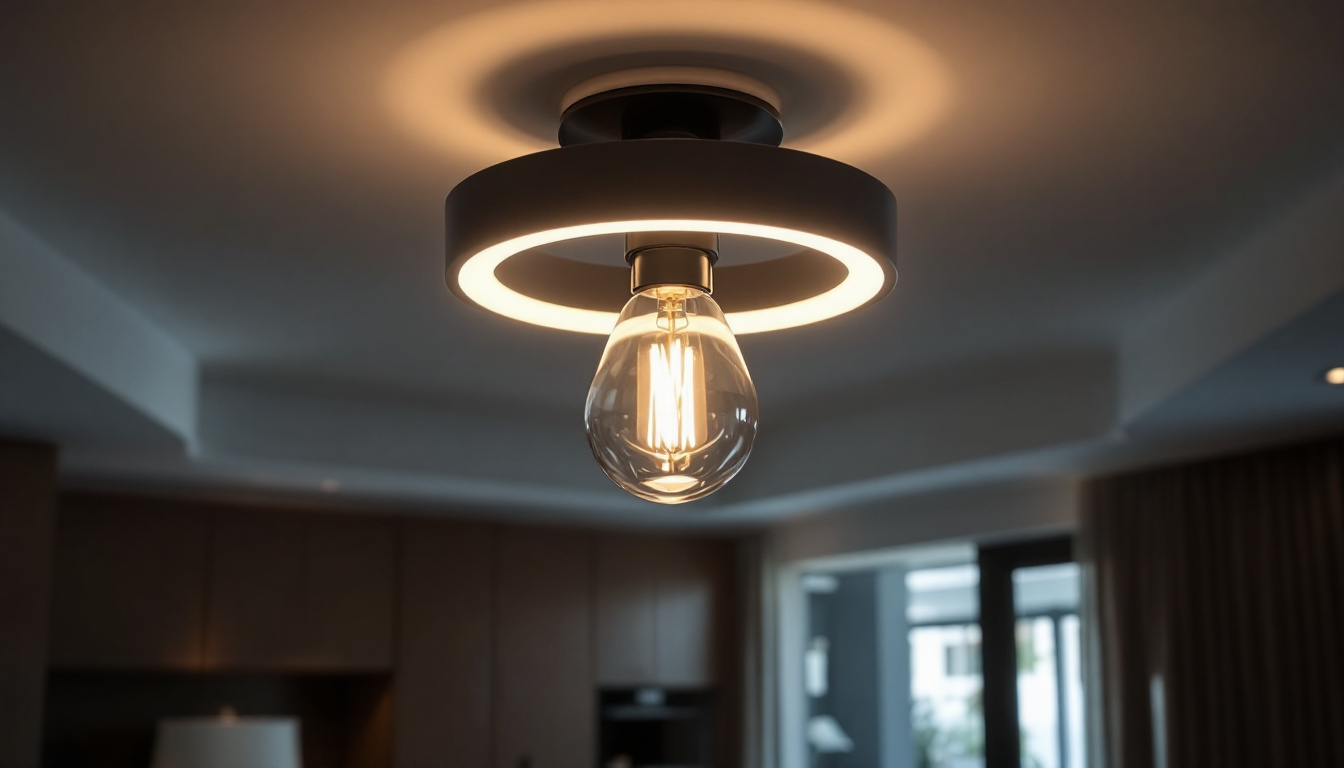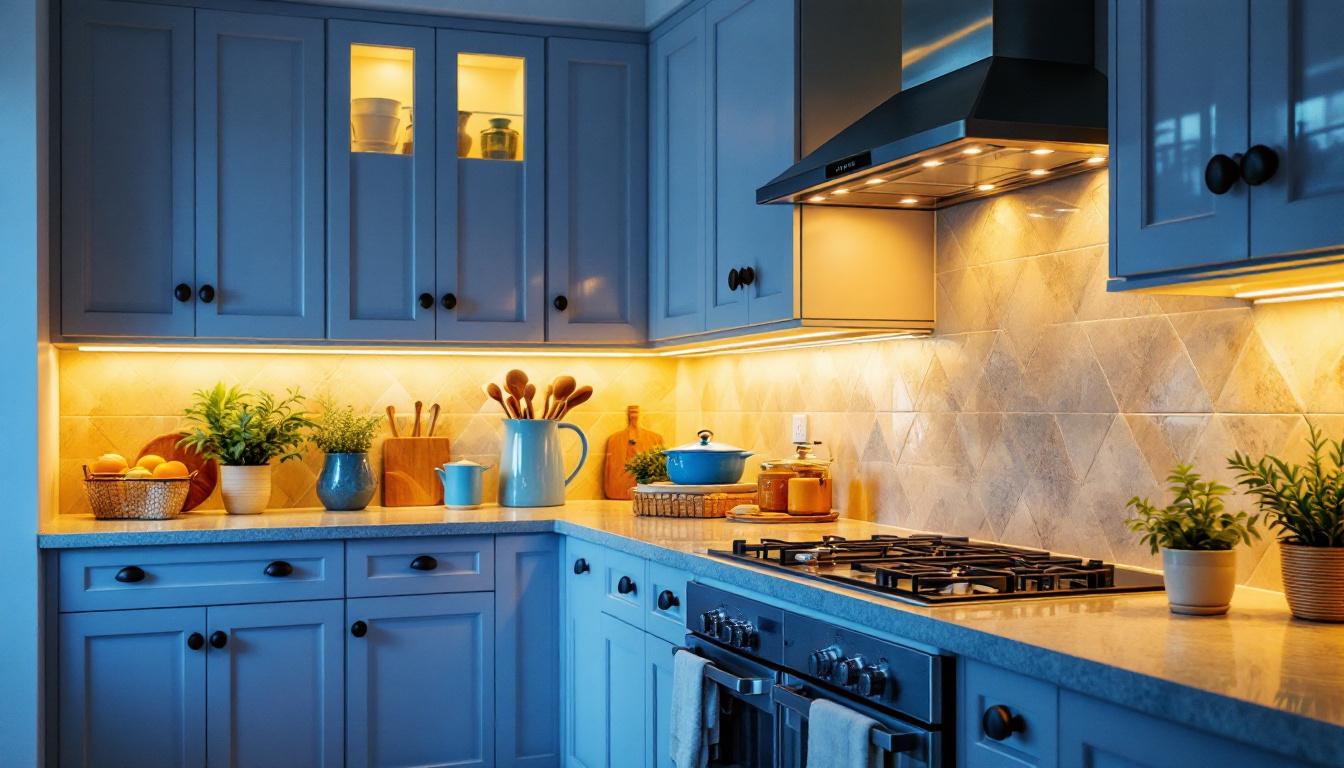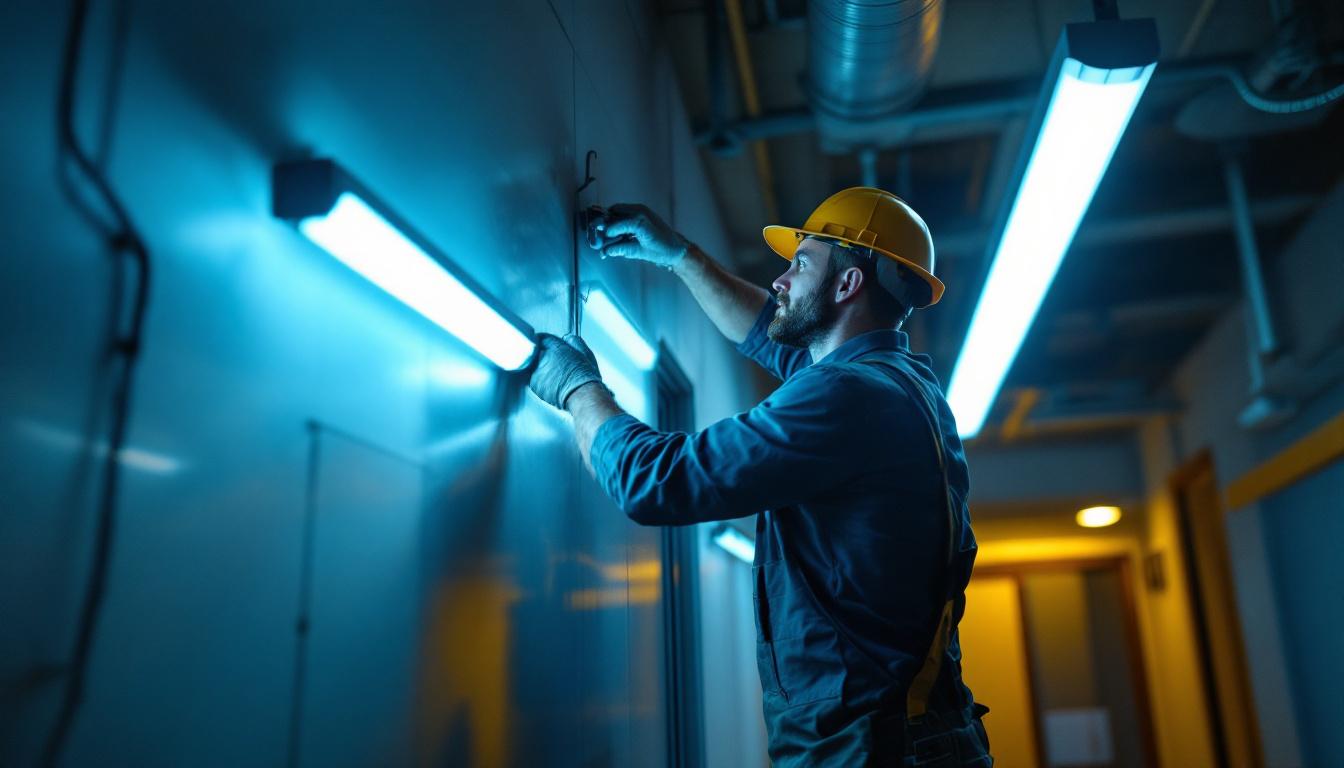
Lighting is an essential aspect of any construction or renovation project. The right lighting can enhance the ambiance, improve functionality, and significantly impact the overall aesthetic of a space. However, when it comes to installing RGB recessed downlights, there are several pitfalls that lighting contractors must avoid to ensure successful outcomes. This article will explore common mistakes made during lighting projects and provide insights on how to sidestep these costly errors.
RGB recessed downlights have gained popularity for their versatility and ability to create dynamic lighting effects. Unlike traditional lighting, RGB (Red, Green, Blue) technology allows for a wide spectrum of colors, enabling contractors to customize lighting to suit various moods and settings. This adaptability makes RGB lighting particularly appealing for both residential and commercial applications, where ambiance can significantly influence the atmosphere and functionality of a space.
Before diving into installation, it is crucial for contractors to fully understand how RGB technology works. Each color in the RGB spectrum can be mixed in different intensities to produce an array of colors, making it possible to create unique lighting experiences. Familiarity with the technology will help contractors make informed decisions during the design and installation phases. Additionally, understanding the principles of color theory can aid in selecting the right combinations to evoke specific emotions or highlight architectural features effectively. For instance, warm colors can create a cozy environment, while cooler tones can impart a sense of calm and spaciousness.
One of the most significant mistakes contractors make is selecting the wrong RGB recessed downlight fixtures. Not all fixtures are created equal, and factors such as lumen output, color rendering index (CRI), and beam angle can dramatically affect the final result. The choice of fixture can also influence energy efficiency, which is an increasingly important consideration for both clients and contractors alike.
Contractors should consider the specific requirements of the space being lit. For instance, a high CRI is essential in areas where color accuracy is critical, such as art galleries or retail environments. Additionally, the beam angle should be chosen based on the intended use of the space. A narrow beam angle may be ideal for highlighting artwork, while a wider beam angle may be better suited for general illumination. Furthermore, the design of the fixture itself should complement the aesthetic of the space, as modern RGB fixtures often come in sleek designs that can enhance the overall décor. By carefully selecting the right fixtures, contractors can ensure that the lighting not only meets functional needs but also contributes to the visual appeal of the environment.
RGB lighting systems often require sophisticated control mechanisms to operate effectively. Many contractors overlook the importance of selecting compatible control systems, leading to functionality issues post-installation. The integration of these systems can significantly enhance the versatility of RGB lighting, allowing for programmable settings that can adjust color and intensity based on the time of day or specific events.
It’s essential to evaluate the control options available, such as wall-mounted controllers, mobile apps, or smart home integration. Understanding how these systems interact with the RGB downlights will ensure seamless operation and enhance user experience. Contractors should also consider the ease of use for end-users, as complex systems can lead to frustration and dissatisfaction. Moreover, exploring advanced features like voice control or automation can add significant value, making the lighting system not just functional, but also a cutting-edge addition to modern living spaces. As technology continues to evolve, staying informed about the latest advancements in RGB control systems will empower contractors to provide innovative solutions that meet the demands of their clients.
Effective planning and design are critical components of any lighting project. A well-thought-out plan can help avoid common mistakes and ensure that the installation meets the client’s expectations.
Before beginning the installation, contractors should conduct a thorough assessment of the space. This includes evaluating the existing architecture, identifying focal points, and understanding the client’s vision for the lighting. By taking the time to plan, contractors can create a lighting design that enhances the overall aesthetic while providing functional illumination. Furthermore, it is beneficial to consider the natural light available in the space throughout different times of the day. This can influence the choice of fixtures and the intensity of artificial lighting needed to complement or counterbalance daylight, ensuring a harmonious blend of natural and artificial sources.
One of the most frequent oversights in lighting projects is failing to calculate the appropriate lumen requirements for a space. Each area has different lighting needs based on its purpose, size, and color scheme.
Contractors should utilize lighting design software or consult industry standards to determine the necessary lumen output for each area. This will help avoid under- or over-lighting, both of which can lead to unsatisfactory results. Additionally, understanding the relationship between lumens and wattage can aid in selecting the right fixtures that meet energy efficiency goals. It is also important to consider the reflectance of surfaces within the space; lighter colors can enhance brightness and reduce the number of lumens required, while darker colors may necessitate higher lumen outputs to achieve the desired effect. This nuanced understanding allows for a more tailored approach to lighting design that maximizes both aesthetic and functional outcomes.
Layered lighting is an essential aspect of effective lighting design. Relying solely on RGB recessed downlights can result in a flat and uninspiring environment. Instead, contractors should aim to incorporate multiple layers of light, including ambient, task, and accent lighting.
By combining different types of lighting, contractors can create depth and dimension within a space. For instance, using RGB downlights for accent lighting while incorporating wall sconces or floor lamps for ambient light can enhance the overall atmosphere. This approach not only improves functionality but also elevates the aesthetic appeal of the environment. Additionally, the integration of smart lighting technology can further enhance layered lighting designs by allowing for dynamic adjustments in brightness and color temperature based on the time of day or specific activities. This flexibility not only caters to the immediate needs of the occupants but also contributes to energy savings and a more sustainable approach to lighting design. Moreover, incorporating dimmers and smart controls can provide users with the ability to customize their lighting experience, making the space more versatile and inviting.
Proper installation is crucial for ensuring that RGB recessed downlights function as intended. Mistakes made during installation can lead to costly rework and client dissatisfaction.
Contractors should adhere to best practices during the installation process, including following manufacturer guidelines, maintaining proper spacing between fixtures, and ensuring secure mounting. Additionally, it is essential to verify that electrical connections are made correctly to prevent flickering or failure of the lights.
After installation, testing and commissioning the RGB recessed downlights is a vital step that is often overlooked. Contractors should conduct thorough tests to ensure that all fixtures are functioning correctly and that the control systems are operating as intended.
During the testing phase, it is important to check for color accuracy, dimming capabilities, and responsiveness of the control systems. This process not only identifies potential issues but also allows contractors to make adjustments before handing over the project to the client. A well-commissioned lighting system will lead to higher client satisfaction and fewer callbacks.
Client education is another critical component of a successful lighting project. Many clients may not fully understand how to operate RGB recessed downlights or how to utilize the control systems effectively.
Contractors should take the time to walk clients through the features of their new lighting system, demonstrating how to change colors, adjust brightness, and set up schedules. Providing written instructions or tutorial videos can also be beneficial. An informed client is more likely to appreciate the value of the installation and utilize the system to its full potential.
Even after a successful installation, ongoing maintenance and support are essential for ensuring the longevity and performance of RGB recessed downlights. Many contractors neglect this aspect, leading to issues that could have been easily avoided.
Contractors should establish a maintenance plan that includes regular inspections, cleaning of fixtures, and prompt troubleshooting of any issues that arise. Providing clients with a clear understanding of maintenance requirements can help prevent problems and extend the lifespan of the lighting system.
Offering warranty and support services can be a significant value-add for contractors. Clients appreciate knowing that they have recourse in the event of a malfunction or issue with their lighting system.
Contractors should clearly outline the terms of any warranties offered, including what is covered and for how long. Additionally, providing ongoing support, whether through phone consultations or on-site visits, can foster strong client relationships and encourage repeat business.
The lighting industry is constantly evolving, with new technologies and trends emerging regularly. Contractors must stay informed to avoid falling behind and making outdated choices in their projects.
Attending industry trade shows, participating in webinars, and subscribing to relevant publications can help contractors keep their knowledge current. Understanding the latest trends in RGB technology, energy efficiency, and design can enhance a contractor’s offerings and improve project outcomes.
Networking with other professionals in the lighting and construction industries can provide valuable insights and opportunities for collaboration. By sharing experiences and knowledge, contractors can learn from others’ successes and challenges.
Joining professional organizations or local trade groups can facilitate networking opportunities. These connections can lead to partnerships that enhance project capabilities and provide clients with comprehensive solutions.
RGB recessed downlights offer exciting possibilities for creating dynamic and customizable lighting solutions. However, avoiding common pitfalls is essential for ensuring successful lighting projects. By understanding RGB technology, planning effectively, adhering to installation best practices, and providing ongoing support, contractors can deliver exceptional results that meet client expectations.
Staying informed about industry trends and networking with other professionals will further enhance a contractor’s expertise and ability to execute successful lighting projects. With careful attention to detail and a commitment to quality, contractors can avoid costly mistakes and elevate their lighting projects to new heights.
Ready to bring your lighting projects to life while avoiding the common pitfalls? Look no further than LumenWholesale for your RGB recessed downlight needs. We provide contractors with high-quality, specification-grade lighting products at unbeatable wholesale prices. Our extensive selection not only meets but exceeds industry standards, ensuring you have access to reliable and high-performance lighting for every project. Plus, with the convenience of free shipping on bulk orders, you can enjoy premium lighting solutions at the best value — without any hidden fees or compromises. Elevate your lighting projects with the perfect blend of quality, affordability, and convenience. Discover the difference at Wholesale Lighting at the Best Value today!

Discover the transformative allure of recessed light chandeliers as expert lighting contractors unveil their top insights.

Discover essential insights and expert tips for lighting contractors in this comprehensive guide on light fixtures.

Discover the crucial role undercabinet lights play in modern kitchen design and why lighting contractors should prioritize them.

Discover the transformative impact of LED fluorescent retrofits through compelling real-world success stories.